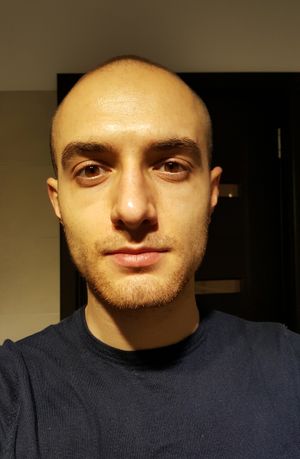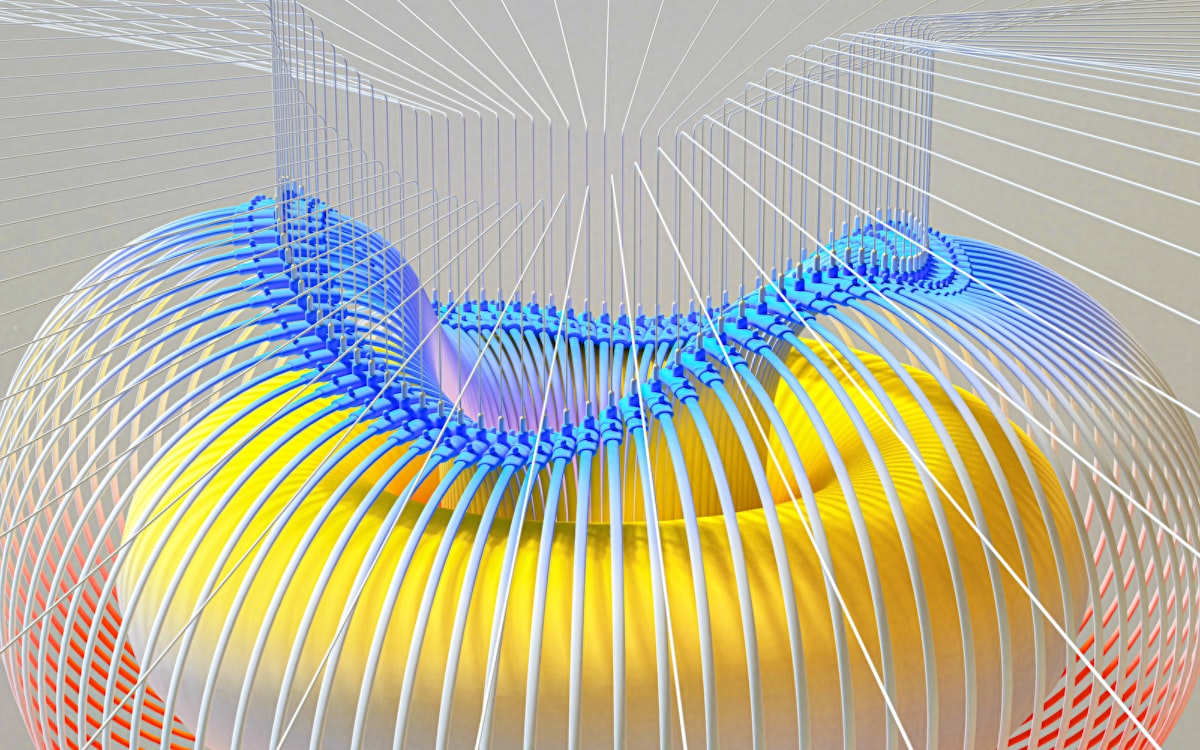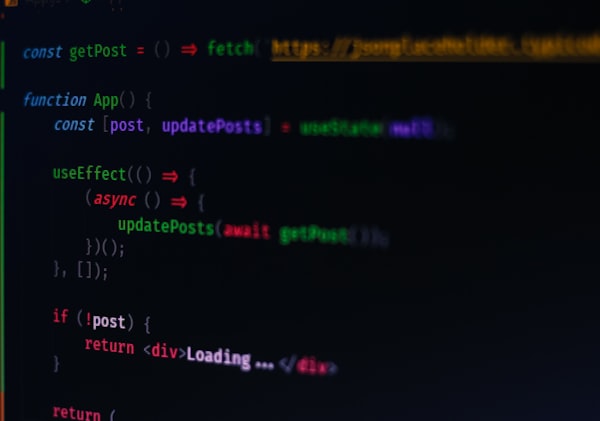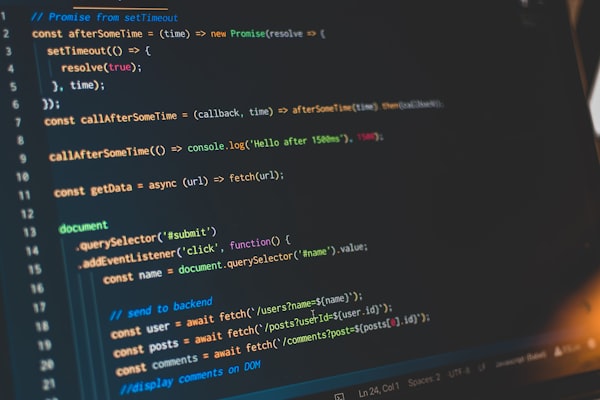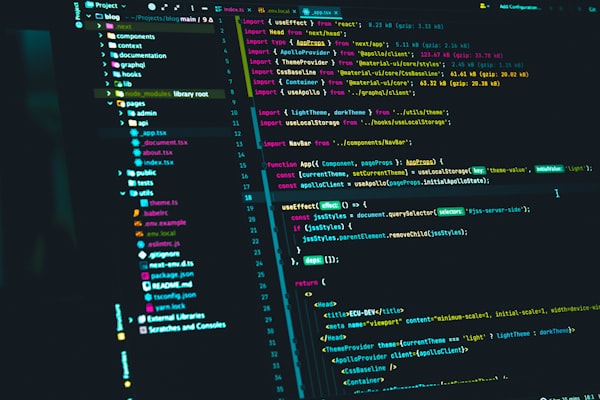1. Introduction to 3D Web Experiences
In the age of the Internet, there are two types of people - those who still prefer reading plain, old-fashioned 2D text on a webpage (bless their hearts), and those who've embraced the thrilling world of 3D web experiences. It's like the difference between eating plain toast and a fully loaded pizza. Why settle for less when you can have more?
The Importance of 3D Web Experiences
3D web experiences are like the superheroes of the internet world. They swoop in to save users from the monotony of flat, static webpages, gifting them with dynamic, interactive, and immersive online adventures. Forget 2D. That's so last century!
You see, 3D web experiences aren't just about adding razzle-dazzle to a website. They're about creating a whole new way to engage with content, like converting your dull morning news read into a riveting treasure hunt or turning your online shopping trip into a thrilling fashion runway.
Imagine walking through a virtual art gallery or exploring the inside of a car engine from the comfort of your living room. What was once only possible in the realm of sci-fi has become a reality, thanks to the magic of 3D web experiences.
Evolution of 3D on the Web
Once upon a time, in a land where dial-up modems roamed the earth and 'buffering' was the most feared word, web browsing was as flat as a pancake. Then came the 2000s and with it, the first inklings of 3D technology. It was like discovering a third dimension we never knew existed – like finding out unicorns were real!
From then on, it was only a matter of time before 3D made its grand entrance onto the world wide web. But like an awkward teenager, 3D on the web had a bit of growing up to do.
The early days of 3D on the web were a bit like a pre-schooler's finger painting - enthusiastic, but messy. Technologies like VRML and X3D emerged, offering glimpses of a 3D future, but they were clunky, heavy, and about as user-friendly as a porcupine in a balloon factory.
Then, like a knight in shining armour, WebGL entered the scene, and things started looking up. With the advent of WebGL, 3D on the web started to really hit its stride. Soon, we had libraries like Three.js making it easier than ever to create fantastic 3D web experiences.
Now, we're living in a golden age of 3D web experiences. From interactive infographics to virtual tours, 3D is transforming the way we surf the web, proving that the Internet isn’t as flat as we once thought. So buckle up, because it's only going to get more exciting from here!
2. Understanding WebGL
Now, buckle up, folks. We're about to dive into the deep end of the 3D pool. We're going to talk about WebGL, the secret sauce that makes 3D web experiences possible. If 3D web experiences were a burger, WebGL would be the special sauce that takes it from "meh" to "Oh, wow!"
What is WebGL and Why Does it Matter?
WebGL, short for Web Graphics Library, is a bit like the wizard behind the curtain in The Wizard of Oz. It does a lot of fancy, behind-the-scenes stuff to create a magical 3D experience on your screen. In simpler terms, it's a JavaScript API that allows you to render interactive 3D and 2D graphics within your web browser, without the need for plugins.
And why does it matter, you ask? Well, it's like asking why oxygen matters to humans. Without WebGL, 3D web experiences wouldn't be possible. It's the backbone, the engine, the...you get the point. It's pretty important.
The Role of WebGL in 3D Web Experiences
Picture this: WebGL is like the stage crew in a theatre production. You might not see it, but it's hard at work behind the scenes, making sure everything runs smoothly. It sets the stage, controls the lighting, and manages the special effects, creating a magical experience for the audience.
In the case of 3D web experiences, WebGL helps to create complex shapes, apply textures, calculate lighting, and much more. It basically takes care of all the heavy lifting, so you can sit back, relax, and enjoy the show.
The Basics of WebGL
Okay, here's where things get a little techy. But don't worry, I'll try to keep it as light and fluffy as a soufflé. WebGL operates on the concept of a rendering pipeline. It's like a conveyor belt in a factory, where raw materials go in one end and a finished product comes out the other.
You start by defining the shapes you want to render (these could be anything from a simple square to a complex 3D model). Then you apply shaders, which are like filters in a photo editing app. They define how your shapes should look in terms of color, lighting, and texture.
Next, you set the position of your shapes in the 3D space and apply transformations like rotation, scaling, and translation. Finally, you define the viewpoint, or camera, from which your scene should be viewed.
And voila! WebGL takes all this information, does some mathemagics, and transforms it into a stunning 3D scene right in your web browser. It's like pulling a rabbit out of a hat, but with less fur and more polygons.
There you have it, folks - WebGL in a nutshell. It's the magic wand that brings 3D to life on the web. So the next time you're enjoying a 3D web experience, spare a thought for the hardworking WebGL, silently toiling away behind the scenes to create that magic for you.
3. Introduction to Three.js
After the deep dive into the ocean of WebGL, let's put on our snorkeling gear and take a more relaxed swim with Three.js. Three.js is like WebGL's best friend - they hang out together, they make cool stuff together, and they've got each other's back. While WebGL can get a bit overwhelming with its complex operations, Three.js steps in to make things easier and more fun. It's like having a translator when you're in a foreign country - suddenly everything makes a lot more sense!
Why Three.js? – Advantages Over Native WebGL
Three.js is to WebGL what a Swiss Army knife is to a simple blade. Sure, WebGL is great and all, but Three.js takes it up a notch. It packs in a lot of tools and functionalities that make dealing with 3D graphics a whole lot easier.
Think of it like this: WebGL is like raw ingredients for a meal. You have everything you need, but you need to do a lot of chopping, stirring, and cooking before you have something edible. Three.js, on the other hand, is like a meal kit. It preps the ingredients, gives you a recipe, and makes the whole cooking process a lot smoother.
In more technical terms, Three.js abstracts many of the low-level APIs of WebGL, providing simple, pre-written methods and properties that you can use to create 3D scenes with less code. That means you can spend less time scratching your head over complex math and more time creating awesome 3D web experiences.
Setting up Your First Three.js Project
Setting up your first Three.js project is as easy as baking a pre-made pizza - you just need to follow the instructions on the box. First, you need to include the Three.js library in your HTML file. You can do this by either downloading the library and referencing it locally, or by using a CDN link.
Next, you create a scene, a camera, and a renderer, which are the three main ingredients of any Three.js project. The scene is like your stage, the camera is your viewpoint, and the renderer is the magic that turns your 3D scene into a 2D image that can be displayed on your screen.
Finally, you add objects to your scene - this could be anything from simple geometries to complex 3D models. Throw in some lights for good measure, start your renderer, and voila! You've got yourself a basic Three.js project.
Understanding Three.js Core Concepts
Three.js operates on a few core concepts that are as essential to a 3D web experience as bread is to a sandwich. These include:
- Scene: This is your 3D world. It's like a blank canvas where you can add objects, lights, and cameras.
- Camera: This is your viewpoint into the scene. It's like your eyes in the 3D world. Three.js offers different types of cameras, but the most commonly used one is the PerspectiveCamera.
- Renderer: This is what converts your 3D scene into a 2D image that can be displayed on your screen. It's like a magician turning a rabbit into a hat...or was it the other way around?
- Objects: These are the stars of your scene. They can be simple geometries like cubes and spheres, or complex 3D models.
- Lights: These add depth and realism to your scene. It's like adding shadows to a drawing to make it look 3D.
There you have it - your introduction to Three.js. So go ahead, dive in, and start creating your own 3D masterpieces!
4. Deep Dive into Three.js
Alright, it's time to roll up our sleeves and dive head-first into the world of Three.js. After all, the best way to learn swimming is by jumping into the water, right? Just remember to keep your snorkeling gear handy!
Working with Geometry and Materials in Three.js
In the Three.js world, every object is a star waiting to be born. But before it can shine, it needs two things: a shape (geometry) and a skin (material).
Geometry is like the skeleton of your object - it defines the shape of your object. Three.js offers a variety of geometries out of the box, like cubes (BoxGeometry), spheres (SphereGeometry), and even toruses (TorusGeometry). You can even create your own custom geometry, if you're feeling particularly adventurous!
Materials, on the other hand, are like the flesh on the bones - they define how your object looks. You can choose from a variety of materials in Three.js, like basic materials that give a flat, single-color appearance, or lambert and phong materials that react to light, giving your object a more realistic look.
Combine a geometry with a material, and you've got yourself a Mesh - a complete 3D object ready to shine in your scene.
Lighting and Shadows: Creating Realistic Scenes
Lights in Three.js are like the sun in our world - they illuminate the scene and make everything visible. But they also do something more - they add depth and realism to your scene.
Three.js offers a variety of lights, from ambient lights that illuminate everything equally, to point lights that simulate a light bulb, illuminating objects differently based on their distance and angle.
But lights are only half the story. To really make your scene pop, you need shadows. And creating shadows in Three.js is as easy as flipping a switch. Literally. Just set the 'castShadow' and 'receiveShadow' properties of your objects and lights, and watch as your flat scene transforms into a 3D world.
Understanding Cameras and Controls in Three.js
In the world of Three.js, the camera is your eyes. It's what you use to look at your scene. And just like in real life, different cameras give you different perspectives.
The PerspectiveCamera, for example, mimics the way our eyes see the world, making things appear smaller as they move further away. The OrthographicCamera, on the other hand, treats all objects equally, regardless of their distance.
But what's a camera without some good controls, right? Three.js offers a variety of controls that allow you to interact with your scene. You can zoom in and out, pan around, and even rotate the scene as if you're inside a 3D video game.
So there you have it - a deep dive into the world of Three.js. So go on, take the plunge, and start creating your own stunning 3D web experiences!
5. Advanced Three.js Techniques
Just when you thought we were done, we're going to crank things up to eleven. We've explored the basics of Three.js, but now it's time to step into the big leagues. We're going to talk about animations, textures, shaders, and even physics. It's like adding the cherry on top of the sundae!
Implementing Animations in Three.js
Animations in Three.js are like adding a dash of life to your static 3D scene. They're what make your objects move, rotate, scale, and do a little dance if you want them to.
Animating objects in Three.js involves changing their properties over time. You can animate an object's position to make it move, its rotation to make it spin, or its scale to make it grow or shrink. The key here is the animation loop, a function that updates your scene and re-renders it at a set interval, creating the illusion of movement.
Three.js also provides a powerful animation system that allows you to create complex animations using keyframes, just like in professional animation software. So whether you want a simple rotation or a complex character animation, Three.js has got you covered.
Working with Textures and Shaders
Textures in Three.js are like wallpaper for your 3D objects. They allow you to apply images to your objects, giving them a more realistic appearance. Want your cube to look like it's made of brick? Just slap on a brick texture!
Shaders, on the other hand, are like the lighting technicians of your 3D scene. They're programs that run on the GPU and determine how your objects interact with light. Three.js provides a variety of shaders out of the box, but you can also write your own for more control over the look of your scene.
Incorporating Physics in Your Three.js Project
Physics in Three.js is like adding a touch of reality to your 3D world. It allows your objects to move and interact in a way that mimics the real world. Want your objects to fall under gravity? Want them to bounce off each other when they collide? That's where physics comes in!
Incorporating physics in a Three.js project involves using a physics engine, a software that simulates physical phenomena. Three.js doesn't come with a built-in physics engine, but it can easily be integrated with external ones like Ammo.js or Cannon.js.
So there you have it - the advanced techniques of Three.js. Now, you're not just swimming in the pool of 3D web experiences; you're doing backflips and cannonballs! So go on, make a splash, and create something amazing with Three.js!
6. Case Studies of Immersive Web Experiences
It's time for us to set sail and explore some real-world treasures! We're going on a virtual tour, inspecting some of the most exciting and innovative WebGL and Three.js projects that have graced the web. These are perfect examples of how the concepts we've discussed so far come alive when executed brilliantly.
Analyzing Successful Three.js Projects
First off, let's visit the realm of music with the interactive music video for 'Three Dreams of Black' by Danger Mouse and Daniele Luppi. This fantastic Three.js-powered project offers a surreal, dream-like 3D world that users can explore and interact with. Check it out here.
Next, we have a Google Doodle celebrating the Antikythera Mechanism, one of the oldest known analog computers. This Doodle showcases a detailed, interactive 3D model of the Mechanism, complete with moving parts and informational pop-ups, all powered by Three.js. Time travel to ancient Greece here.
These projects teach us that Three.js, combined with creativity and technical skills, can create engaging, interactive, and impressive web experiences. So, don't be afraid to think outside the box!
Lessons Learned from Complex WebGL Applications
On the WebGL front, we can learn a lot from Google's 'Your Plan, Your Planet' project. This interactive tool uses WebGL to create a 3D model of a house, allowing users to explore different ways to reduce waste and conserve resources. Experience this eco-friendly project here.
Another noteworthy example is the New York Times' 'The Dawn Wall' project. This interactive article uses WebGL to create a detailed, 3D model of the Dawn Wall of El Capitan in Yosemite National Park, complete with routes and annotations. Scale the heights here.
These cases prove that WebGL, despite being more complex than Three.js, offers greater control and flexibility, making it ideal for intricate, detailed projects. However, it does require a more profound understanding of 3D graphics and programming. So gear up and be ready to dive deep!
Remember, your imagination is your only limit when creating with WebGL and Three.js. So dream big, experiment, and don't be afraid to stumble. That's how the best web experiences are born!
7. Performance Considerations
Alright, we've had our fun creating flashy 3D scenes, but it's time to put on our serious faces for a moment. After all, what good is a stunning 3D web experience if it's slower than a snail riding a turtle? So, let's talk performance.
Beware of Overdraw
Overdraw is like having too many cooks in the kitchen. It occurs when the same pixel is drawn over and over in a single frame, usually because multiple objects are overlapping. This can slow down your rendering and make your scene as sluggish as a sloth on a lazy Sunday afternoon.
To avoid overdraw, try to minimize the number of overlapping objects in your scene. Also, consider using the depth buffer and frustum culling features of Three.js and WebGL. These can help you only draw what's visible to the camera, saving precious rendering time.
Use Textures Wisely
Textures are like the spice in your 3D recipe - they add flavor and realism. But too much spice can spoil the dish. Large, high-resolution textures can eat up memory and slow down rendering.
To optimize texture usage, consider using smaller, compressed textures. You can also use techniques like mipmapping and anisotropic filtering to improve texture quality without impacting performance.
Don't Forget About Garbage Collection
Garbage collection is like the cleaning crew of your web experience. It removes unused objects from memory, freeing up space for new ones. But if you're creating and destroying a lot of objects in your scene, garbage collection can slow things down.
To avoid this, try to reuse objects whenever possible, rather than creating and destroying them. This can significantly reduce the load on garbage collection and keep your scene running smoothly.
Optimize Your Animations
Animations are the life and soul of your scene. But like a hyperactive puppy, they can get out of control if not managed properly. Running too many animations at once, or running complex animations on large objects, can slow down your scene.
To optimize animations, consider using the requestAnimationFrame function, which syncs your animations with the browser's refresh rate. Also, try to keep your animations simple and minimize the number of animating objects.
So there you have it - the key to creating a smooth, efficient 3D web experience. Remember, performance is just as important as visuals. After all, nobody likes a slow, choppy web experience, no matter how pretty it looks. So keep these tips in mind and keep your web experiences fast and smooth!
8. Future of 3D Web Experiences
Dust off your crystal ball, because we're about to take a peek into the future of 3D web experiences. If you thought things were exciting now, just wait till you see what's on the horizon!
Rise of WebXR
WebXR is like the superhero alter ego of WebGL and Three.js. It extends the capabilities of these technologies to create immersive Virtual Reality (VR) and Augmented Reality (AR) experiences on the web. Imagine walking through a 3D model of a house you're thinking of buying, or seeing how a new piece of furniture would look in your living room - all on your web browser!
As more and more devices support WebXR, we can expect to see a surge in VR and AR web experiences. So get ready to step into the future, because it's coming faster than a cheetah on a sugar rush!
More Realistic Graphics
As WebGL and Three.js continue to evolve, we can expect to see more realistic graphics on the web. Advanced lighting models, high-quality textures, and complex shaders will make 3D objects look more lifelike than ever before.
Imagine seeing a car on a website and not being able to tell if it's a real photo or a 3D model. That's the kind of realism we're talking about!
Improved Performance
As web technologies improve, so will performance. Faster rendering, better memory management, and more efficient algorithms will make 3D web experiences smoother and more responsive.
No more waiting for scenes to load or dealing with choppy animations. The future of 3D web experiences is fast, fluid, and frustration-free!
Integration with AI and Machine Learning
Artificial Intelligence and Machine Learning are making waves in every field, and web graphics are no exception. In the future, we could see AI being used to generate 3D models, create animations, or even optimize performance.
Imagine a web experience that adapts in real-time based on your behavior, or a 3D model that's generated on the fly based on your preferences. With AI and Machine Learning, the possibilities are endless!
So there you have it - a glimpse into the future of 3D web experiences. It's a future filled with immersive VR and AR experiences, ultra-realistic graphics, smooth performance, and smart AI integrations. And the best part? You get to be a part of it. So buckle up, because the future of 3D web experiences is going to be one heck of a ride!
9. Conclusion
Well, folks, we’ve reached the end of our whirlwind tour of 3D web experiences. We've journeyed through the land of WebGL, climbed the Three.js mountains, dived deep into the sea of advanced techniques, and even caught a glimpse of the future. Whew! It's been quite a trip!
We've discovered that creating immersive 3D web experiences is a bit like making a magic potion. You need the right ingredients (WebGL and Three.js), a dash of creativity, a sprinkling of technical know-how, and a big spoonful of fun. And like any good potion, it takes practice to get it just right.
But the rewards are well worth it. A well-crafted 3D web experience can captivate audiences, engage users, and create unforgettable online interactions. So don't be afraid to experiment, to push the boundaries, and to create something truly magical.
Remember, the world of 3D web experiences is vast and ever-evolving. There's always something new to learn, some new technique to master, or some new trend to keep up with. So keep exploring, keep learning, and most importantly, keep having fun.
So here's to you, intrepid explorer of the 3D web. May your journey be filled with stunning visuals, smooth performance, and plenty of laughter. Happy coding!
And that's a wrap! I'll see you in the next adventure, folks. Until then, keep your coding fingers nimble and your imagination wild. Ta-ta for now!

